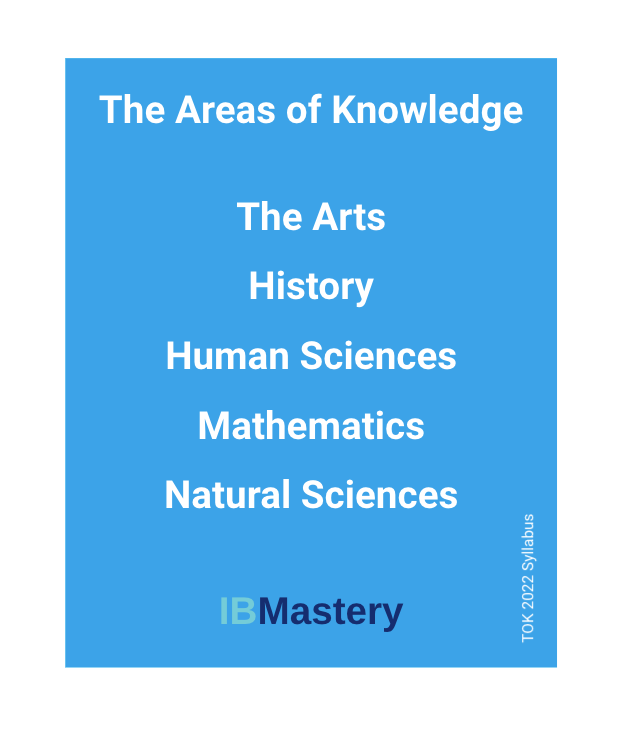How to Structure a Theory of Knowledge Essay

The following structure is a very good, step-by-step method you can use on any TOK essay to get a great mark. (It is updated for the 2022 syllabus).
You can find our video analysis of the most recently May and November Theory of Knowledge Essay Prescribed Titles in our members area. We also have a lot of helpful advice, tutorials, and evidence videos there. And of course you're welcome to try it. We'll also give you a lot of videos, notes and other resources to help with with your TOK Exhibition, here.
Okay here we go...
First, choose your Prescribed Title
Before you can begin your essay, you’ll want to look at the Prescribed Titles and choose one of them. Take some time to think about them before you choose. Sometimes the simple one is not the best one--perhaps because you can't think of any interesting ideas, just the most obvious ones. Complicated questions can make for more interesting essays.
The most important thing to remember is that your #1 priority is to answer the prescribed title, so make sure every paragraph you write clearly relates to the title question.
Consider two or three of the titles before you settle on one.
Then, once you've chosen your Prescribed Title, get some of your initial ideas down on paper. This seems like an obvious step, but it's valuable. Later you can try to find evidence to support these initial ideas you had.
Second, choose your 2 AOKs
 Now, take your prescribed title and choose two Areas of Knowledge to explore it with (You can use our detailed notes and videos for every AOK, Theme and more). Some titles will require you to include a certain AOK (saying something like "... Discuss with reference to the natural sciences and one other area of knowledge"). With those types of questions you'll obviously just need to choose your second AOK.
Now, take your prescribed title and choose two Areas of Knowledge to explore it with (You can use our detailed notes and videos for every AOK, Theme and more). Some titles will require you to include a certain AOK (saying something like "... Discuss with reference to the natural sciences and one other area of knowledge"). With those types of questions you'll obviously just need to choose your second AOK.
It's recommended your essay contains two body sections (or "developments"). Each body section will look at a certain area of knowledge and each will have a claim and a counter claim in it. Be careful how you set up this claim and counter claim. Normally one side will simply agree with the statement in the question and the other will disagree with it. (If you'd like to talk through your essay decisions, Tim is available for TOK Zoom tutoring every day.)
The courtroom analogy
It's helpful to think of the TOK essay as though you're sharing the most interesting bits of a conversation between two smart people. Or you could think about it as presenting two sides of an argument about knowledge, in front of a judge. To be successful each side needs to present evidence and explain clearly how the evidence relates to the question.
One side would say YES to the (prescribed title) question, using evidence and the other is arguing the other side (saying NO), also using evidence.
In your essay, we want to see both sides argued well and then, in your conclusion, you'll weigh up the evidence --telling us which side is the more right (or the ways they're right) and maybe the circumstances wherein the other side would be right.
Making sure your evidence actually supports your claims and counterclaims is one of the toughest aspects of the essay.
The TOK Essay Structure
Our structure for the TOK essay has 4 sections (6 paragraphs) overall.
First, write your introduction. (100-150 words)
Paragraph 1
-Say one or two interesting things about the prescribed title question. This shows us, right away that you know what the question is asking.
-Define one or two of the key terms in the title. Get definitions for all of the main words in your title. You don't need to include all of them in your essay, but it's useful to see how different people think about the words. Sometimes these definitions can also give you some hints for claims, counterclaims or evidence.
-Give the reader a roadmap. Clarify for the reader how you're going to explore the essay question--which AOKs you're using, for example. This will make it easy for the marker to know what to look for.
Next write your first development. (2 paragraphs totalling 600 words)
Paragraph 2
-In this paragraph you'll explore your claim for AOK 1.
-State your claim. A claim is a topic sentence that outlines your argument about the prescribed title. For example you could claim that, “Mathematics can be relied on because it is a purely logical system. It is axiomatic and independent of subjective experience.”
-Example. Your examples can be from your life, like something that you noticed doing your Biology IA, or something from research, like how CRISPR was discovered. The example needs to be specific, precise and real though. And it needs to clarify and support the claim. So you could talk about how, “In mathematics we learned that the inside angles of a triangle, in Euclidian space, sum up to 180 degrees.”
-Explain. Clarify (and explore) how your example supports your claim. Notice what is interesting about your example and what it says about the title.
Paragraph 3
-Counter-claim. Argue against your claim above. “However, it is possible to come to different conclusions using different systems of mathematics.”
-Example. Provide an example that supports your counter claim. “It is not possible to demonstrate that the interior angles of a triangle equal 180 degrees in Euclidian space, this cannot be proven within other systems, such as spherical geometry or hyperbolic geometry.”
-Explain. Clarify (and explore) how your example supports your counterclaim. Notice what is interesting about your example and what it says about the title.
-Sum up the development section. Linking to the prescribed title, highlight the insights you've had about this AOK and the prescribed title. “It is therefore clear that mathematics is reliable to an extent, but often it can only show something to be true within one fixed system or approach.”
Now, write another two body paragraphs, for your second AOK. (600 words)
Paragraph 4
-State your claim.
-Provide an example, which supports the claim.
-Carefully explain how the example supports the claim.
Paragraph 5
-State your counter-claim.
-Provide an example, which supports the counter-claim.
-Carefully explain how the example supports the counter-claim.
-Sum up the insights you've had about this AOK and the prescribed title.
Finally, write your conclusion. (200-250 words)
Paragraph 6
-Your conclusion. Explain what insights you've made, related to the prescribed title question. Take some time to synthesize the major insights you had about your two AOKs.
Implications and significance. Also tell us why it's important that we know this. Clarify when and how it's matters that we understand these insights.
-Perspectives and extensions. If you can, try to pull in a different perspective, on your conclusion. Perhaps you can recognize a different way of approaching the question, which could have resulted in quite different insights than those you included in your essay. Or you could also mention an unresolved question or a limitation that your exploration revealed.
Obviously there is a lot more depth that we can go into about what makes a really great TOK essay, but this structure will get you started. And we can meet and talk about your essay, if you'd like.

Tim is available for private tutoring, almost every day, to support you in writing your best TOK Essay. He's an expert Theory of Knowledge teacher (a fully IB-trained teacher and marker) with over 18 years of teaching experience. 🚀 Click here to meet with Tim on Zoom and talk through your work. 🚀
Tim also helps students with IB Business Management, IB Global Politics, IB Economics, IB History, IB English and College Admissions essays.






